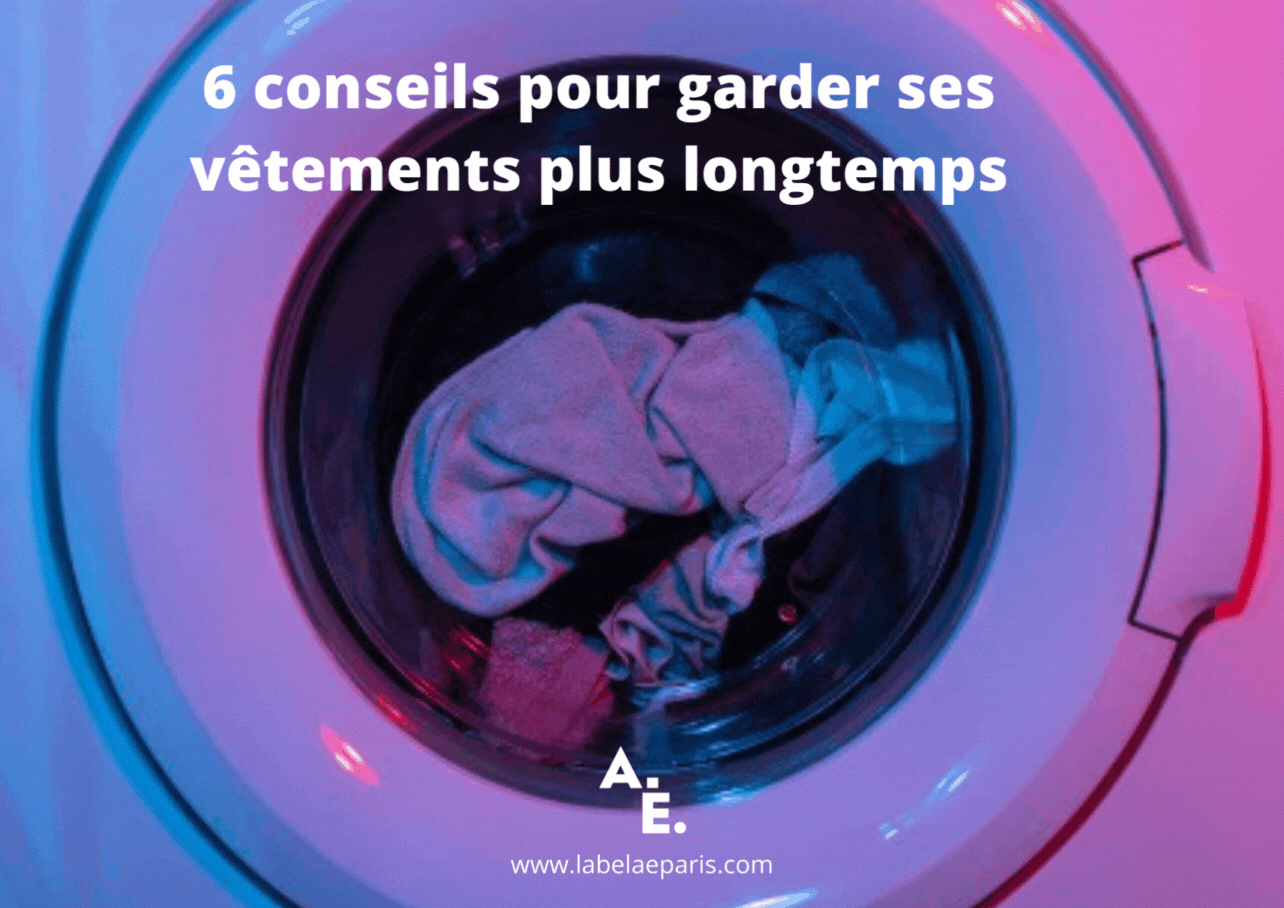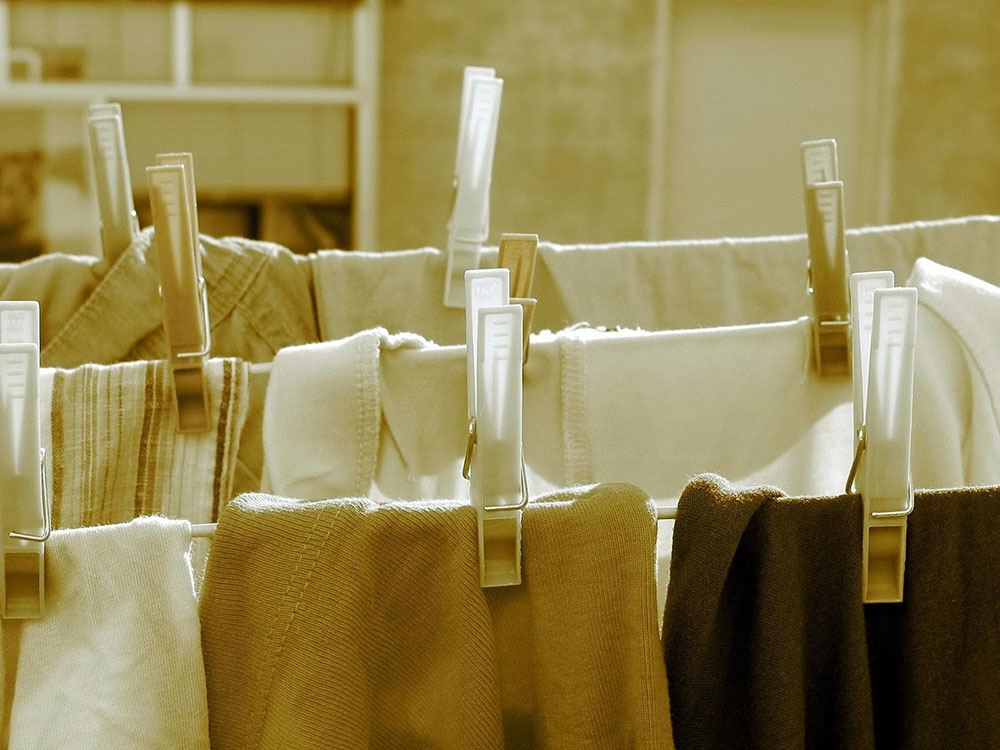
6 tips to keep your clothes longer
Cleaning your clothes is a harmless act that we practice on a daily basis. However, many of us perform this task automatically without thinking about the consequences of too frequent washing. Because there are consequences : first on our environment and also on the longevity of our clothes. The two are also closely linked. Indeed, extending the life of a garment can significantly reduce its impact on the environment. According to Carbontrust, a garment’s emissions can be reduced by 24% over the year by doubling its lifespan from one to two years. Keeping your clothes on longer is therefore an eco-responsible act !
In this article, we give you 6 tips to take care of your clothes and keep them longer.
1. Buy quality clothes
The first step to keeping your clothes on longer is to buy good quality clothes. If longevity is an important criterion for you, you can say goodbye to fast fashion ! On the contrary, favor slow fashion : a principle that aims to counter a model of mass and standardized production. It highlights the quality of the products, the transparency of the value chain, the diversity and responsibility of its actors, and of course the pleasure.
Label AÉ surrounds itself with designers committed to the slow fashion movement. All the pieces offered are manufactured using eco-responsible techniques, using noble materials of high quality.

2. Sort your clothes before machine washing
To sort your clothes correctly before washing them, you must take into account the labels where the recommended washing methods are indicated. Different subjects require different approaches. Wool, for example, should only be washed when absolutely necessary, using a specific detergent for wool on a gentle cycle or hand washing. This is also the case for all delicate fabrics such as cashmere and silk, which are particularly vulnerable to chemicals and heat.
In order to maintain the original color of your clothes, it is also very important to sort them accordingly. White, colored and dark clothes are washed separately.
3. Wash less
A study reveals that nearly 13,000 tonnes of microfibers are released into European marine environments each year. This figure could be reduced by 30% if we change our washing habits slightly.
In addition to the impact on the environment, which is significant, too frequent washing considerably damages the fabrics of our clothes.
A short guide to know how often to wash your clothes :
| The jeans | The jeans wash after 5 or 6 uses, preferably by hand. |
| The bras | Bras are sensitive but can quickly become a breeding ground for bacteria. The ideal is therefore to wash them after three uses, alternating with several bras. Hand washing is also preferable. |
| Jackets and coats | The jacket rarely comes into direct contact with the skin, so one or two washes a year are sufficient. The coat is to be washed once a season. Dry cleaning is strongly recommended here in order not to damage the shape. |
| Tee-shirts, robes, chemises | As these pieces are worn close to the body, they easily absorb perspiration. Washing is therefore recommended after 1 or 2 uses. |
| Sport clothes | Sportswear is necessarily in contact with perspiration, washing after each use is therefore recommended. Hand washing may be sufficient. |
| Pajamas | Pajamas should be washed every 5 days. Except in case of excessive sweating. In this case, hand washing may be sufficient. |
| Sweaters & Sweatshirts | These garments are generally not in direct contact with the skin as they are worn over lighter garments. It is therefore recommended to wash them after 3 to 5 uses. |
| Underwears | Underwear, on the other hand, is in direct contact with the skin, including areas of the body likely to develop bacteria. They must therefore be washed after each use. |
4. Wash inside out
Washing your clothes inside out in the washing machine avoids damaging the fibers of the fabrics. You must also be careful not to overfill your machine as this would prevent effective cleaning and even rinsing.
5. Avoid the dryer
Although very practical, the dryer is not only energy-intensive but damages the fabrics of your clothes by making them more fragile. The best option is to air dry. It’s also best to lay wool garments flat to dry on a white or light-colored, lint-free towel.
6. Learn to mend clothes
It is essential to learn a few tricks to repair your clothes when they are damaged. Whether it’s sewing up a hole in your favorite sweater, or moisturizing the leather of your favorite jacket, repairing means you don’t have to throw it away prematurely.
In the same context, you can start upcycling. This concept consists in recovering materials or objects that we no longer use and that we upgrade in order to give them a new life. In this case, it would be enough to take old clothes and bring them up to date. You can shorten a dress that is too short or use the fabric to create a whole new model, for example. You only need your imagination to refresh your wardrobe !
As you will have understood, washing and drying techniques have a considerable impact on the longevity of textile materials. But if there is one thing to remember, it is that it is essential to make the right decisions when buying. Investing in quality clothes not only allows you to keep them for a long time but also helps preserve the environment. Remember : the longer you keep your clothes on, the less emissions there will be !
Yasmine Besbes

